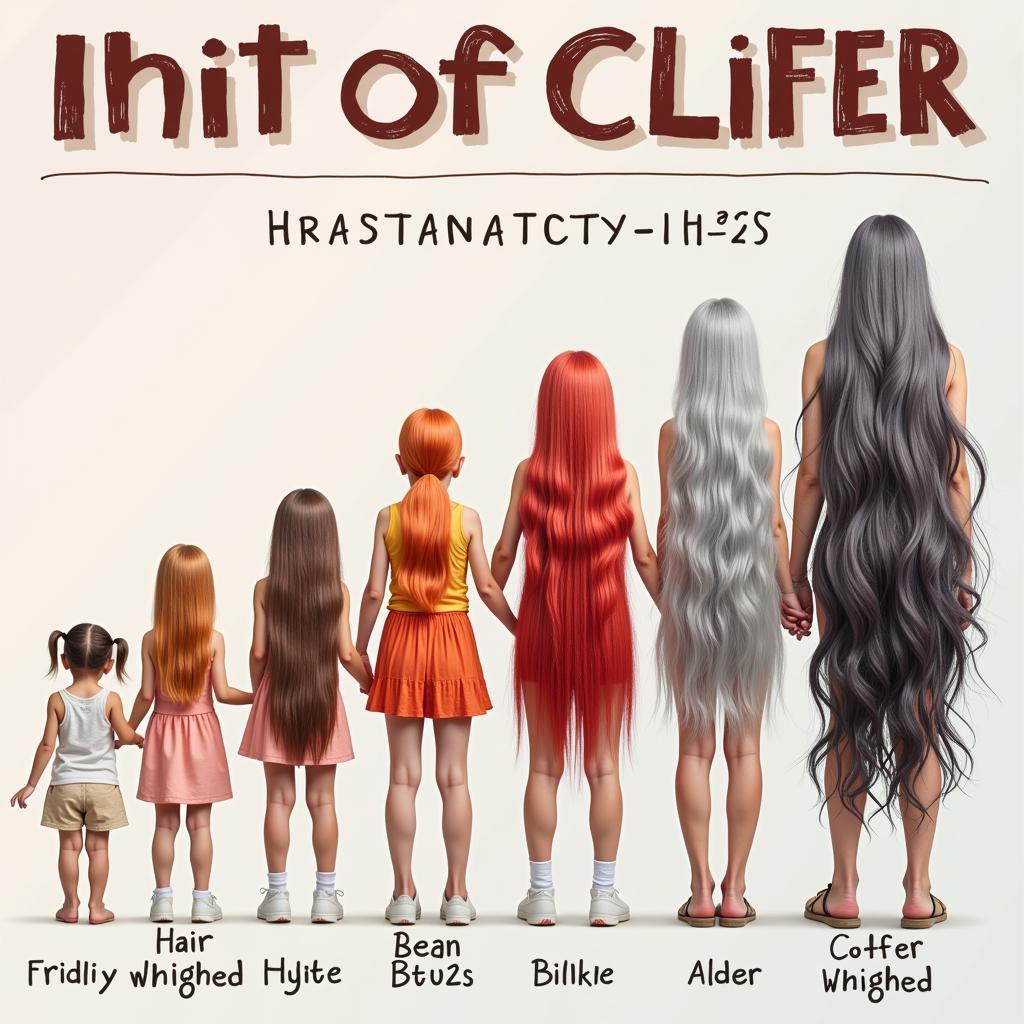Understanding your natural hair color goes beyond simply looking in the mirror. It’s about recognizing the undertones, depth, and dimension that make your hair unique. This knowledge empowers you to make informed choices about everything from choosing flattering clothing colors to selecting the perfect hair dye for a stunning transformation.
Decoding Your Natural Hair Color
Identifying your true hair color can be trickier than it seems. Lighting, hair products, and even previous color treatments can all affect how your hair appears. To accurately assess your natural hair color, examine your hair in natural daylight, preferably outdoors. Focus on the roots where the new growth shows your truest shade.
Identifying Undertones: Warm, Cool, or Neutral?
Your hair’s undertone, the subtle hue beneath the surface, plays a crucial role in determining which colors best complement your complexion. To determine your undertone, consider these methods:
- The Vein Test: Look at the veins on the inside of your wrist. If they appear blue or purple, you likely have cool undertones. Green veins indicate warm undertones, while blue-green suggests neutral.
- The Jewelry Test: Which metal looks better against your skin? Gold complements warm undertones, silver flatters cool ones, and both look good on neutral undertones.
- The White Paper Test: Hold a piece of pure white paper next to your face. If your skin appears yellowish or golden next to the white, you have warm undertones. Pink or rosy hues indicate cool undertones, and if your skin looks relatively unchanged, you likely have neutral undertones.
 Determining Hair Color Undertone: Vein, Jewelry, and White Paper Tests
Determining Hair Color Undertone: Vein, Jewelry, and White Paper Tests
Levels and Dimensions: More Than Just One Shade
Hair color isn’t flat; it has depth and dimension. Understanding the level system, which ranks hair color from 1 (black) to 10 (lightest blonde), can be invaluable when discussing color with a stylist or choosing at-home dyes. Furthermore, natural hair often features a blend of different shades, creating highlights and lowlights that add visual interest. Observing these nuances provides a more comprehensive understanding of your hair color.
Common Hair Color Descriptions and What They Really Mean
Terms like “ash blonde,” “golden brown,” or “auburn” describe the combination of level and undertone. “Ash” signifies cool tones, “golden” implies warm tones, and “auburn” refers to a reddish-brown. Familiarizing yourself with these descriptions helps you pinpoint your hair color more precisely. Similarly, understanding how these terms relate to hair dye can be helpful when considering a change. You can read more about how to choose the right hair dye color in our guide: how to know what color to dye your hair.
Why Knowing Your Hair Color Matters
Beyond aesthetics, knowing your hair color can be practically useful. It can help you choose clothing and makeup colors that enhance your natural features. Warm-toned hair often looks best with earthy tones and gold jewelry, while cool-toned hair is complemented by jewel tones and silver.
How Hair Color Changes With Age
Hair color naturally changes over time, typically darkening in childhood and gradually lightening with age. Understanding this process can help you manage expectations and embrace your evolving hair color. For example, knowing how to maintain color-treated hair as it grows out can prevent unwanted brassiness or fading. Learn more about maintaining your hair color in our article: is dry shampoo color safe.
 Hair Color Change Over Time: Childhood, Adulthood, and Aging
Hair Color Change Over Time: Childhood, Adulthood, and Aging
Conclusion
Knowing your hair color is about more than just a simple label. It’s about understanding the intricacies of undertones, levels, and dimension. This knowledge allows you to make informed decisions about hair care, styling, and even your wardrobe. By taking the time to truly understand your hair color, you can embrace your natural beauty and express your unique style. For questions about hair coloring or color removal, see our guide on is color remover bad for your hair. You can also explore the topic of wet hair coloring in can you color your hair wet.
FAQ
- Can I change my hair’s undertone? While you can’t change your natural undertone, you can use hair dye to create the illusion of a different undertone.
- What’s the best way to describe my hair color to a stylist? Use descriptive terms like “ash,” “golden,” or “auburn,” along with the level system (1-10) for clarity.
- How can I prevent my hair color from fading? Use color-safe shampoos and conditioners, and limit exposure to the sun.
- Is it normal for my hair color to change over time? Yes, hair color naturally changes with age.
- How can I choose a hair color that complements my skin tone? Consider your skin’s undertone (warm, cool, or neutral) and choose a hair color that harmonizes with it. To find the best hair color for you, check out [how to know what hair color is best for me](https://colorbox.com.vn/how-to know-what-hair-color-is-best-for-me/).
Need help choosing the perfect color for you? Contact us at 0373298888, email [email protected], or visit our Color Box Hanoi location at 86 Cau Giay, Hanoi. Our 24/7 customer service team is ready to assist you.

